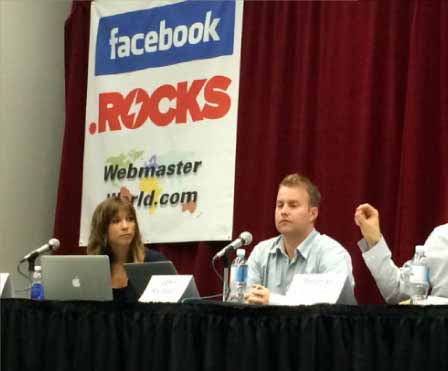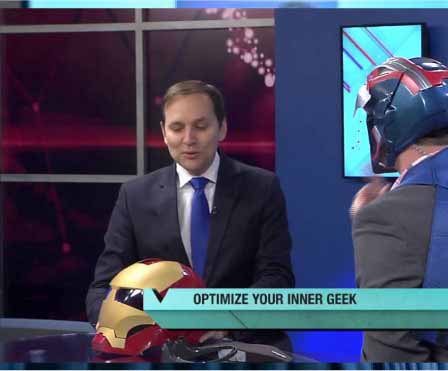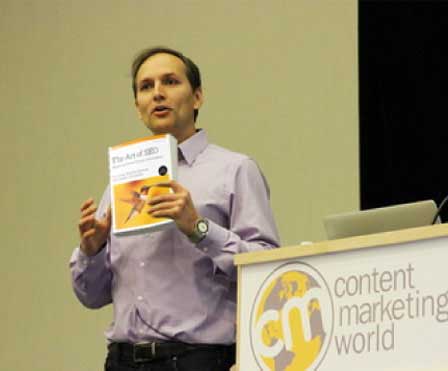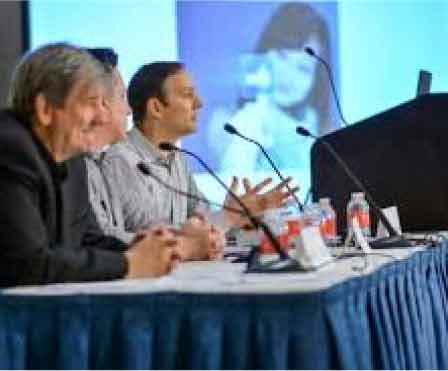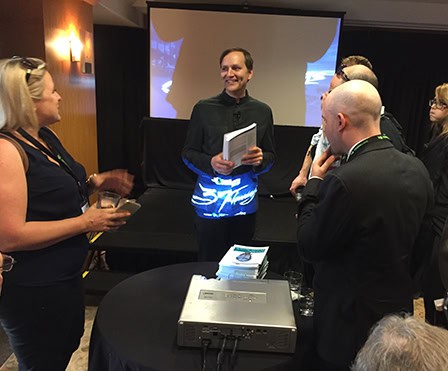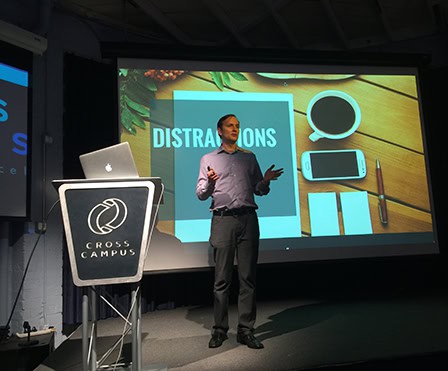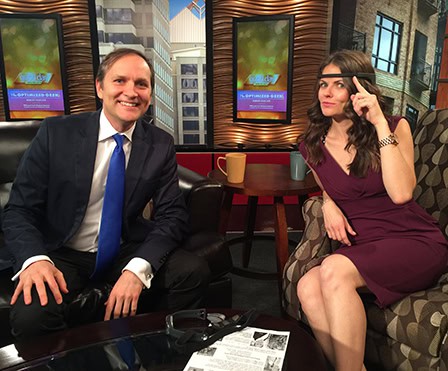Welcome to another episode of Get Yourself Optimized, I’m your host Stephan Spencer, and I have the pleasure of having here with me Tim Hodges. I met Tim a couple of years ago now in Fiji at an event of Tony Robbins called Life Mastery. I had the pleasure to have him work on me. He does this amazing technique called fascial counterstrain. I had never heard of it before, but Tony Robbins was hugely impressed, not only with the technique but with Tim in particular. Tim had worked on Tony and with some of Tony’s Platinum clients. The rest is history.
Tim has worked on many of Tony’s clients at different events – the Life Mastery event that I was at, Tim continued to work at those events on attendees and it’s just an amazing, life-changing technology that is all about working with the fascia which is above the muscle – he’s going to give you all sorts of detail of how it works and the benefits and all the technology behind – but it’s amazing what it can do to alleviate pain, to remove symptoms, to change the course of chronic disease, it’s pretty powerful stuff. Tim is one of the top experts in this field, so I’m really excited to have him us today, and talk about his area of expertise and how it can impact your life. Welcome, Tim!
Thank you very much, Stephan. Glad to be here.
Why don’t we start off by just share a bit with our listeners about your background, how you got into this very particular field that many people have never heard of. You have a whole story of how you got into this.
Yeah, I was in the military many years ago and suffered a pretty bad hand injury that left me incapacitated for about 7-8 months and required a couple of surgeries, and I ended up being discharged, and that kind of altered my life plan a little bit. I left with an appreciation for the field that I had spent 7-8 months in, going through the rehabilitative process, following surgical repair. I had not really considered a line of work, and this whole process intrigued me. I set myself on a path to become a physical therapist. And in my first assistant role working at a physical therapy clinic, I came across this technique and it was immediately recognizable as powerful to me, but I did not have a good understanding of how it was able to perform what seemed like modern-day miracles. And so I spent about a week or two with my friend Christie, who had taken some classes in this thing called strain and counterstrain, and saw one thing after the next that continued to defy my understanding of what was possible with the human body.
What we were treating was not actually a muscle, but was the connective tissue of the body.
We’re talking about being able to move a joint that didn’t move normally for months, and then after literally one session or two sessions you restore all motion and strength, and pain diminishes greatly with this technique. I kind of shifted my focus from this physical therapy track and I wanted to get as quickly as possible into a field that would allow me to utilize this technique. I felt that it was different enough from everything else that was being done at the time that it warranted a career focus on just this one technique. I started with this in about 1998 and then eventually got certified in 2004. I’ve now spent about the past 7 or 8 years with my friend Brian Tuckey, which is an innovator of the current fascial counterstrain. We have had this strain counterstrain model for something like 60 years, and Brian was the first to recognize that what we were treating was not actually a muscle, but was the connective tissue of the body.
This was revolutionary because most people that work within the field of physical therapy, even osteopathy, chiropractic, massage therapy, occupational therapy, whether you’re a golfer or you do somatic presencing or do some type of bodywork, the way we treat the myofascial seems to be pervasive. So, there are hundreds – I’m not kidding, there are literally hundreds – of techniques that focus on myofascial treatment. Brian was the first to say “You know what? It is a connective tissue-based. But it is not necessarily a muscle that we are treating”. If you begin to study fascia or connective tissue you realize very quickly that it is everywhere. We have connective tissue surrounding all the nerves in the body. It’s called the epineurium or the perineurium. We have fascia that surrounds our arteries, it’s called the arterial adventitia. We have connective tissue that surrounds the veins, the venous adventitia. We have connective tissue or fascia around all of our organs.
If it’s in the digestive system, we refer to it as the peritoneum. If it’s in the cardiopulmonary system, we refer to it as plura or the mediastinum or the pericardium of the heart. If you looked at the skeletal system, all of our ligaments are technically a form of fascia or connective tissue. It’s a very thick form of it, but it is histologically the same tissue throughout the body. Our brain is surrounded and held in place by dura; dura is a very tough layer of connective tissue, but it is, nonetheless, fascia. So literally every tissue in our body has the stuff. And Brian was curious enough to wonder what in the world do we have this fascia for. We were taught in school that it was this inert or inactive tissue that simply glued one tissue to the next and held things together, thereby creating some sort of “body glue” that kind of prevents us from being some pile of ectoplasmic goo. And that was just accepted as fact, nobody questioned it. It was a very brief thing.
Fascia is actually a contractile tissue.
Then we just moved on. And so the topic of fascia was very brief, people forgot about it, moved on. We wanted to know things that we thought were more appropriate with our line of work. Being bodyworkers or manual therapists, and that was muscles and joints. So this idea that it was really connective tissue based was really brought about by some research that started in the early 90s. You know how it is in the medical profession, somebody can figure something out or stumble upon something and it takes years for this to propagate through the system until it becomes common knowledge. Sometimes it is even a generational gap that needs to be bridged. People that are in the profession now have a hard time accepting new theories because it calls into question what they may have done previously for the last 15-20 years of their career. And I believe that is what this connective tissue research is starting to show because the first thing that was so profound about this research is that fascia is actually contractile tissue.
The whole thing has smooth tissue scattered throughout so it can be active contracted, but not by you. You cannot consciously affect it, it is controlled by the autonomic nervous system everywhere. So now we have this concept of actively contractile tissue surrounding every tissue in the body, and we still have to ask the question – why do we have it? If it is just there for gluing things together, why is it actively contractile? And you know, it turns out that is not the only thing that was discovered. 2003, I believe, a German researcher who just happens to be a Rolfer, and for those of you who don’t know what rolfing is, it’s a form of fascial therapy that has been around for quite some time.
Ida Rolf was a bodyworker who developed this many many years ago, 60-70 years ago, and it was highly successful and still is a highly successful form of bodywork. They believe purely in this fascial component. He set out to do fascial research because nobody else was doing it, especially the way that he wanted it to be done. He was the one that was able to find the presence of nerve tissue within fascia, sensory nerves, and motor nerves. Motor nerves were obviously the thing that controlled the smooth muscle within the fascia, the sensory nerves were varied. He found some that were mechanically sensitive. So if you were to put a stretch on the connective tissue, it would sense a stretch. He also found thermally sensitive nerve endings; so if a tissue were to change temperature, it would alter its activity. If you chilled it, it would contract. If you heated it, it would elongate. And there are chemically sensitive nerves as well.
Chemical toxicity can create an alteration in what the fascia does.
Chemical toxicity can create an alteration in what the fascia does. Now you have a completely active, highly sensitive blanket of fascia over every vital piece of tissue in your body. Now, the answer seems quite obvious; the reason this is here is for protection and its protection against literally everything. A physical strain of the body could be catastrophic if we didn’t have a way to sense when that injury could be potentially be threatening of an artery or a large vein or a nerve we need to control nerve signals to the heart. So this pervasive tissue covers all vital tissues and is hardwired into our central nervous systems. We consciously don’t have to do anything to for it to make a determination of what is necessary to protect us. And that’s exactly what happens when we fall or when we are in a car accident. If we eat an inflammatory substance, this can trigger a protective reflex.
Protective reflex is complicated but the initial irritating stuff is quite simple. If you experience a painful event, or like I said you eat something that is inflammatory or does not agree with your body, you trigger this process, and this process is literally irritation of the pain nerve within the fascia and a reflex part that goes back into the spinal cord and right back out into the tissue where the fascia was located. This could be a visceral reflex. You ate a dairy product that was not good for you, your body will naturally try to protect itself and will produce a visceral spasm. This could be of the esophagus, or of the stomach, and it can persist. If you continue to inflame yourself, this reflex will persist. When it becomes problematic over long periods of time, the condition does not reverse on its own. So a bad injury that involved maybe like a whiplash injury in a car, there’s a lot of vital tissue involved; your body must produce a protective response or you could literally die in that event.
Arteries get strained. Nerves get strained. The spinal cord can get strained. And all of those things have those vital protective reflexes that cause somatic tissue, which is our muscle, to be called upon to protect. So there’s a dual effect here. You get a vessel itself or within the nerve itself, and then those tissues are able to literally hijack the muscle tissue in your body in order to protect those vital tissues from harm. And so understanding all of this, and its control to the fascial reflex arc, and that there is a mechanical nature to this, means that there is a mechanical solution. And the mechanical solution is where Brian and I could help in the last 7 or 8 years. He is the main innovator in this technique but we’ve been able to figure out mechanical corrections for literally hundreds of these tissues throughout the body. So that’s kind of in a nutshell from the beginning to the current day of what we do in terms of trying to figure out treatments based on this fascial model. We now do treat in 11 different systems, 5 of which are based in the nerve system. So it’s a multisystem, universal approach to the treatment of connective tissue disorders throughout the entire body.
So this original name of strain counterstrain, it sounds like your kind of straining the system in order to put it back to balance, but that’s not really the way it works is it?
When the body suffered a strain, apply a counterstrain to reverse this process.
It’s not really a straining event at all. There is some logic behind Dr. Jones, who is the original innovator of strain/counterstrain in the 50s and 60s, his logic behind that name goes back to his understanding of this being a muscular reflex. He later altered that, he no longer believed this was purely a muscular reflex but also a spinal reflex arc, but he wasn’t totally sure what tissues were involved. He believed that the body had suffered a strain, and so he was going to apply a counterstrain to reverse this process. Which literally meant he just took the body out of a strained position which doesn’t sound as threatening as the name. It’s always been a very gentle technique. We used primarily body positions for the longest time. It’s only recently we started with this connective tissue, which requires a fascial glide to reverse the tighter spastic tissue. It is not a painful process, and the process is soothing because we take the body into a position or a direction that it is already capable of doing.
If you could imagine a tight hamstring, a lot of people suffer from tight hamstrings. If you were to apply a direct technique to a tight hamstring, you would stretch it, which makes sense. You would lengthen it, so you would put it into a long position and try to further elongate the tissue. The body, on the other hand, interprets that as a threat. If you had a tight hamstring and you went to directly engage this tissue that is tight, it would ramp up these protective reflex mechanisms in the body and actually create a layer of protection. The way you feel that is that your body fights it; most people who have this experience know that when you try to stretch your hamstring, it just typically fights back. And you don’t typically get that far with it.
In our world, we look at what is leading to the tight hamstring, we don’t see the tight hamstring as the problem. We look at it as the solution to what the body thought was necessary to protect itself. We wouldn’t stretch it at all. We’d probably shorten it, and see if the problem was nerve-based. Is it an organ-based problem? Is there a vasculature dysfunction in the venous tissues that are preventing the hamstring from stretching. Is there a vascular problem in the arterial tissue that is creating a problem from stretching? And the body will answer in the affirmative when we locate the tissue that is actually causing that problem. So symptoms that create the symptoms are two totally different things. Most people think their pain is their problem, and we in our experience find that it is just not the case. Pain is a symptom. Treating the pain is really kind of a dead end. You must be able to find the source of it. What we have come across in the last 8 -10 years is we found the source that creates all these things.

So you’re kind of a detective figuring out where this symptom originated from and then going straight to the source instead of trying to alleviate the pain of the symptom itself?
That’s correct.
So I remember when you were working on me, you did some fascial glides and doing stuff like working on fascia on my face and that was having an impact on other parts of my body, which kind of blows my mind a bit, that you do something on the face or on the top of the head or whatever and that impacts some completely different part of your body. Why is that? How does that work?
There’s a couple of different things I think you’re referring to. We do a diagnostic and the diagnostic is based on cranial motion. Which is an odd thing for some people, people think that their heads are these immobile, single-bone structures. It couldn’t be further from the truth. Bones vary from person to person, but we have joints in the head that you can usually feel them if you know where to go. You can look up cranial sutures and there are definitely these cranial joints between bones in the head. And they are there early on in life to allow growth. We actually have holes in our sutures, soft spots, that fill as babies grow in size. They ultimately fill in. The sutures, on the other hand, remain flexible. As we age, they will remain flexible. It is an interesting phenomenon that different events in the body will create rigidity within these sutures or within these bones that can be easily palpated there.
And the actual mechanism is partly mechanical and strongly neurological. We know that there is nerve tissue everywhere, we don’t have nerves in just specific locations. There are large trunks of nerves that are in specific locations, but the nerve tissue is dense. So throughout the entire body. As a matter of fact, when we refer to this as a reflex-based treatment, as a protective reflex of an artery or sometimes protective reflex of a vein an organ, it is because there is nerve tissue within the outer layer, and that is what is communicating to the body the need for protection. So our head scan, or our cranial scan as we call it, enables us to determine what system and wherein the body to actually treat. And barring an actual demonstration, it is a difficult concept for people to grasp.
We utilize motion over the forehead or frontal bone to determine nerve dysfunction throughout the body.
But nonetheless, it is a reflex-based restriction. It is part of the brain tissue itself that can create rigidity, and that is in our mind, it is part of the brain that is controlling that system. So we utilize motion over the forehead or frontal bone to determine nerve dysfunction throughout the body. It is extremely precise, and without this way of figuring out to and what system, the concept of treating fascia in different systems throughout the body and upwards of 750 different diagnostic tender points, it becomes quite daunting to go and check all those things. So we utilize this motion test to put us in the ballpark, so to speak, so we can go and then check individual tender points in a small area versus the entire body.
That’s the one thing you were experiencing, the cranial scan, and that leads me to nerves in the hand for instance, and then I treat them. And at the same time, we treat these things locally within the hand, the release can be felt in the head because they are linked, they are basically the same thing. And then there is the other side of this is when we treat centrally, we do have a global effect on the body, especially when we do something like the dura, the dura is the connective tissue of the brain. And so we can treat the connective tissue around the brain, the different folds of it, and this will have a direct impact on the neurological system, it can have a direct impact on the visceral system or the vascular system, and that’s the distal, the distant impact that you feel throughout the entire body. But that’s kind of true in every system, we can do that.
So cool. I remember when you were doing the cranial scan on me, I was thinking, “This is just so science fiction. This is crazy. This is like a Star Trek tri-quarter, you’re just touching my head and able to find all these different sensitive spots in my body that need to be released or addressed.” It’s really really cool.
Tony sort of refers to that as “The Dashboard”.
Pretty phenomenal. Another thing that was really memorable for me on that trip and your work on various people is I remember a lady there, I think her name was Sophie, who had a knee problem where she was not able to bend her knee, hardly at all. And this was a chronic issue that had been going on for years and she had severe swelling in that leg. And after several sessions with you, her swelling was way down for the first time in years, and she was able to bend her knee to a much greater degree than she had been able to. That was profound, I was amazed.
Some of those things we wish we had video or at least some photographic evidence of the change, we do now record things that we see going in, the really odd dysfunctions that are visually intriguing. She had severe venous and lymphatic dysfunction in the leg from an old injury. I think it was 8 or 9 years previous to seeing us in Fiji. It completely blocked her lymphatic system, so she ended up with pretty severe edema, or what we call lymphedema. James, my colleague James worked with her 4,5, maybe 6 times, but yeah, after the bulk of that work was done, there was an obvious change. A color change, a temperature change, a change in motion improvement, and this all stems from finding the actual problem and producing an effect in the body that is aligned with how the body actually works.
The main goal of the autonomic nervous system is to control and regulate everything that we do not need to have conscious input on a daily basis.
To remove a string of tissue, like a vein, means that at some point during the injury, many years ago, the body’s venous tissue was traumatized and traumatic injury in the vascular world causes a contraction or a shrinkage if you will of the vein itself. This makes it much less likely to drain fluid, in this case, blood, out of a limb. This is very very common even something as simple as an ankle sprain, you get swelling that happens pretty quick. Part of it is maybe the body’s initial response to injury. If it can happen, the inflammation is a stage of healing. However, you often get a dissociated, functional reflex that will persist. And people that have had ankle sprains notice that they seem to be more prone to ankle sprains again and again after they’ve had an initial one.
This is because the protective reflex was never really addressed. And you can get past the normal stages of healing when you start to move it again and the second and third week when you’re actually utilizing it at a higher level, maybe it is still a bit sore, and then by the fifth week, you feel back to normal. But there is often, like I said, a persistent dysfunctional reflex that keeps the venous system in her case at a slight disadvantage. So your body, over time, builds a huge backlog of fluid. Our treatment utilizes a fascial glide done right on the vein. It actually accesses a characteristic of venous tissue, called the venous distention reflex, you can look that up if you’re interested. Venous distension reflex is controlled by the sympathetic nervous system.
Sympathetics are a branch of the autonomic, and the main goal of the autonomic nervous system is to control and regulate everything that we do not need to have conscious input on a daily basis. We don’t need to control how our heart and lungs work, or our digestive system or circulatory system. It is all controlled via the autonomics. And when you apply a little shortening glide to venous or arterial tissue, you can invoke this reflex and you can turn off a maladaptive reflex. This causes instant vasal dilatation. So literally dilate instantly. We do have doppler ultrasound evidence of this. You hold this for a period of time, in the fascia world, we’re done in about 30 seconds. That’s enough time for the reflex to reset. Much in the way that a crashed computer program need be reset sometimes these are like little tiny programs all over the body that will encounter a threat or a trauma and they crash, and then they sit there in a spastic state, waiting for someone to come and reset them, and that’s what we do.
People that have had ankle sprains notice that they seem to be more prone to ankle sprains again and again after they’ve had an initial one. Share on XIs there a role for fascial counterstrain in terms of ongoing maintenance? Or is it more treating a chronic injury, you get a certain number of sessions to correct that imbalance and then you’re done until you have another injury or chronic symptom come up?
I think there is definitely a wellness component. If you’d gone back prior to us doing this kind of fascial research I think you’ll find we’ve redefined the entire technique, I don’t think any of us would have said that maintenance or wellness was in our wheelhouse. But that’s because we have a very confined view of what we do. The technique. And now our perception of what we do, I would say on a weekly basis it expands. You don’t know until you try, in certain cases, but most people that we see now, the chronic failed cases, I’m game for basically anything at this point, because I know there is a lot of people suffering from strange things that haven’t really been cleared from a medical standpoint. Or they’ve been cleared medically but are still in a chronic state of pain or dysfunction, or they’ve lost some functionality. So our list of what we can affect is growing by a week-to-week basis. So there is absolutely a wellness thing. I tell most people if they have a chronic condition they will likely require 1 session per system of dysfunction.
So six main systems, 11 if you count all of the subsets within the neural system, you know most chronic things that have been around 10-15 years, they typically have something in every system. It is so persistent. So we do different things with different systems. And then when they are done, when I get them all the way back to when they feel they’ve stepped back in time 10 or 15 years and they’ve regained functionality and feel better, their pain levels have dropped. I tell them not to be a stranger, to pop in every three months or so, and let me just run through their system. So if they encounter a cold, a flu, eat something in a restaurant and get a little case of food poisoning, get around some sort of environmental toxins, have a fender bender. All these things that most of us kind of shrug off “oh, that’s normal, you get the flu and then you move on”. It is normal because people get that disease all the time, but I would say its more “common” than “normal”.
It is normal because people get that disease all the time, but I would say its more “common” than “normal”.
So, common because everybody gets it. Normal would be you’re going back to a normal state, and that’s just not the case. A severe case of the flu or bronchitis or something will leave a mark on your immune system. And our lymphatics, we have an entire system that we treat, known as the lymphatic system, that is your immune system. And it pairs very tightly with the venous system. And that is where your body educates itself on pathogens, how to flag them, and how to trigger the immune response when it sees them again. In the process of killing the invaders, the lymphatic system can actually experience a dysfunction that looks just like a vascular dysfunction within the venous world. When that happens, it will sequester infectious material. How do we know this? Well, most people that have had a significant illness, if it has created a significant amount of dysfunction in the body, they’ll feel lethargic and run down, their energy levels are low. They may get every little bug that goes through the house. They may feel like their immune system response is a little bit off.
These people are chronically dysfunctional within the lymphatic system. And when you treat that lymphatic system, you literally unlock sequestered material within the lymphatics, and they will experience the illness on the table. In many cases, it causes what we call a Herxheimer reaction which is fever. And this happens with the chronically infected or chronically ill patients all the time. 10 or 15 minutes into the session, they’ll break into a shake or like a feverish tremor. You can measure their temperature, usually, they crank up 100, 101, 102 degrees. It will persist for 10 or 15 minutes, it may persist for a few hours, and then it is gone. And then they begin to experience the normal functionality of the immune system which is not that they get everything, but they get a few things. Instead of a long drawn out thing, they get a few weeks, and it drops right down to the normal 1- to 2- week response. That’s been our experience for years, now, treating the lymphatics. So if there was 1 system that someone could point to as being highly effectual in maintaining a high level of health, I’d say it is this one, the lymphatics.

Wow, and what about allergies, where do those fit in here? If somebody gets the flu, I could understand how that works. But somebody who didn’t have allergies or hay fever or anything and now a chronic allergic reaction to pollen, is that something that could be treated through fascia counterstrain?
I would say a few years ago, I would have looked at you sideways and said, “You know I haven’t had that experience yet that we’ve had an impact with someone with severe allergy”. I’m not saying people don’t have that as a problem, that is a problem they have due to genetics or genetic predisposition because it is. However, there are also people that think they have allergies to everything. I had the opportunity to treat a young gal, she was 19, 20 years old. Her entire life had severe allergies and they did not take a break. From one season to the next, chronically congested, sinus infections, couldn’t breathe, headache, sore throat all the time. I thought it was definitely suspect. That’s not typical in the world of allergies.
She was on medications trying to combat this. Scanning her, her primary dysfunction was lymphatic. She did have some visceral stuff in the lungs as well, so in that one session, we treated I think maybe 3 different systems. Primarily though, lymphatics. And that was it. She literally has not had a case of an allergic reaction to pollen, grass, whatever it was she thought she was allergic to since. And it’s been over a year now. I would say sometimes it is dysfunction masquerading as allergies. And the only real way to find out is to scan that person to see if they have the dysfunction necessary to create those symptoms. If somebody has allergies, and they are a real form of them, not this masquerading type, they will not likely have a significant dysfunction. So a scan will take seconds and we’ll say “Oh, yeah, you’ve got it” or “Nope, you don’t have it, sorry, what you have is seasonal allergies”.
Wow. So how would somebody hire you to do the cranial scan, to do the fascial work that comes with finding the various issues that comes with the scan? I’ve had such a profound experience getting work done by you, that I would love for all of my listeners to have that opportunity. You’re in Portland, Oregon and already pretty busy. So how would that work?

Well, you know I do most of the work in my clinic here in Portland. And in recent years we have done events with Tony – which have been phenomenal, and I don’t say that lightly. He’s probably one of the most amazing people that I’ve ever met, and his audience seems to be of a similar caliber of person. Just really top quality people. Really our event offerings are to get these practitioners exposed to a lot of different kind of people and they kind of solidify this technique with them. They’re really good. You immerse yourself in something for that long of a period of time, it gets in your body and it becomes second nature. I often take students that I’ve trained as an ending to their training. I love to do this to people who have never had it done, as do my students, and so the people that are actually participating at this event, get to have a concentrated form of this treatment that is unlike anything they have ever experienced and usually unlike the clinic experience as well.
Clinic experience is probably what you would expect, 1 maybe 2 times a week for about an hour. That’s how most people get this work done. We now have a good number of people who’ve completed the mastery -level training in my clinic as well as we’ve done mastery level training for the last 4 or 5 years. And there is some information on my website and there is some information on the Jones Institute. If you are looking for someone in your area, that is probably the best way to locate them. The Jones Institute is the parent organization that organizes and then sends instructors out to teach our 3-day seminars and we have about 5 of these seminars in the fascia world, adding a few more in the next couple years to round out the offering in terms of tissues that are not currently treated or taught.
Right, okay. So folks who are far out of your area, go to the Jones Institute website and find a practitioner that way.
Correct.
But somebody could have a direct experience with you if they are in your local area of Portland, Oregon or if they are at an event that you are working at such as life mastery event in Fiji.
And we do have a number of people that fly in – I would love to say that we had like 2,000 people highly trained and ready to do this work, but as Brian and I are developing it, Brian more so than me, developing the stuff on a weekly basis, the amount of people that have been exposed to the knowledge is minimal. And the amount of people, they’ve mastered the stuff, again since this is an emerging technique, we’re probably 3 years out from having 200-300 highly trained ready-to-go practitioners. But that’s one of my goals, and honestly this was the point of the call, but my level of training wouldn’t be where it is if it were not for you.
I have you to thank for being kind of the ultimate kick in the rear to get on the immense job of building this mastery level training, not just in my local area, but throughout the entire world. It is expanding now throughout the entire world, and that’s amazing. 2 years after our first contact to be able to have another conversation with you and relay that we are going to be in South America. Randy has expanded Jones Institutes offerings out of Europe. He’s been teaching now for quite a number of years in Italy and France. We’re excited to bring this to the planet, most of us feel kind of a sense of obligation to get this out because this is a life-changing, life-altering experience. The feelings are difficult to convey through a conversation. It is something that literally does need to be experienced.
Totally agree. And so that is why I wanted my listeners to be exposed to this whole technology and discipline, this whole science of fascial counterstrain, and by all means everybody listening should go out an experience it. Don’t just say “Wow, that was interesting, I’d love to hear more about it”. Get up off your butt and do something. Well, I really appreciate you joining us today for this all, Tim. It’s been eye-opening, I’m sure, for many folks. I encourage everyone to go out and experience fascial counterstrain. Look up Tim and his website, which is WestSidemt.com. Or go to the Jones Institute website and find a practitioner if you can’t get with Tim, and start making this stuff happen.
I would also point out Brian’s website. For those of you out listening, he’s located on the east coast, located in Frederick, Maryland. His website is tuckeypt.com. He’s got some good information on his site as well.
Well thank you again, Tim.
My pleasure.
Important Links
Checklist of Actionable Takeaways










 About Tim Hodges
About Tim Hodges
Tim Hodges, LMP has been pioneering an effort to expand the methodology of Strain Counterstrain to effectively restore function to fascial systems, and receive chronic pain almost instantly.
Disclaimer: The medical, fitness, psychological, mindset, lifestyle, and nutritional information provided on this website and through any materials, downloads, videos, webinars, podcasts, or emails is not intended to be a substitute for professional medical/fitness/nutritional advice, diagnoses, or treatment. Always seek the help of your physician, psychologist, psychiatrist, therapist, certified trainer, or dietitian with any questions regarding starting any new programs or treatments, or stopping any current programs or treatments. This website is for information purposes only, and the creators and editors, including Stephan Spencer, accept no liability for any injury or illness arising out of the use of the material contained herein, and make no warranty, express or implied, with respect to the contents of this website and affiliated materials.
LOVED THIS EPISODE
Please consider leaving me a review with Apple, Google or Spotify! It'll help folks discover this show and hopefully we can change more lives!
Rate and Review







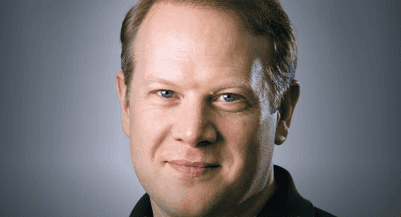
 About Tim Hodges
About Tim Hodges



